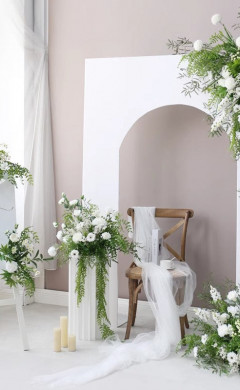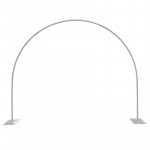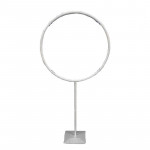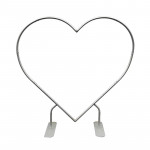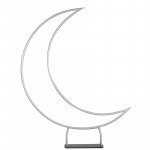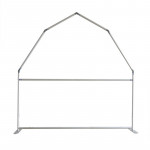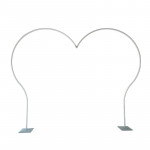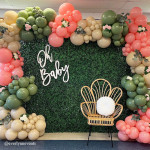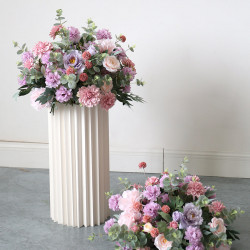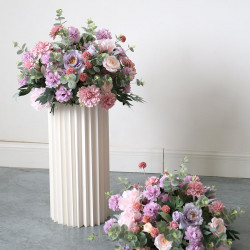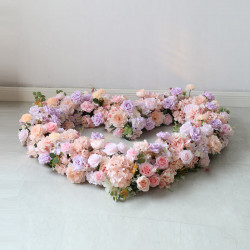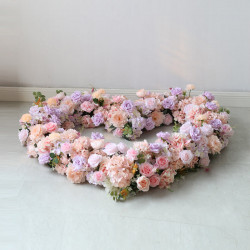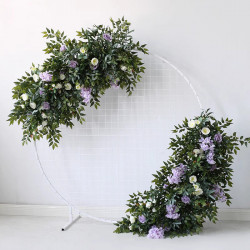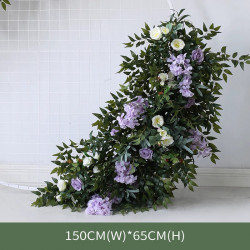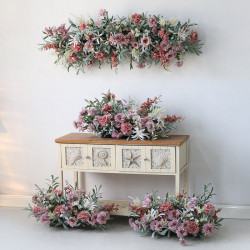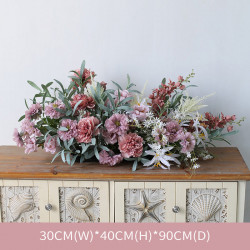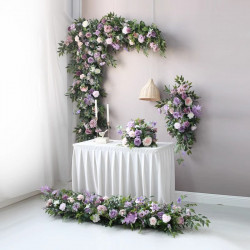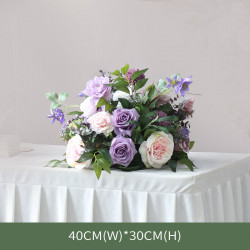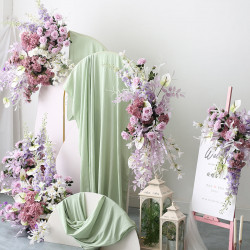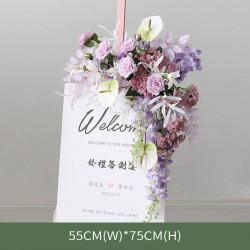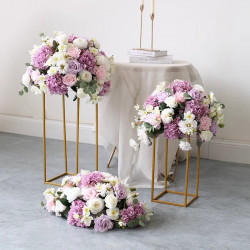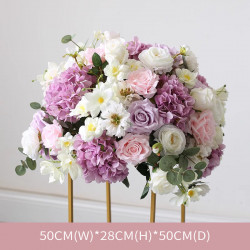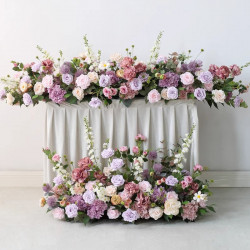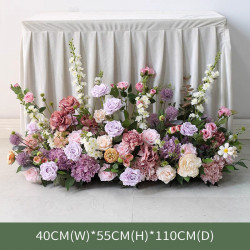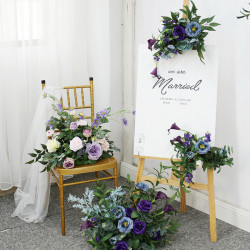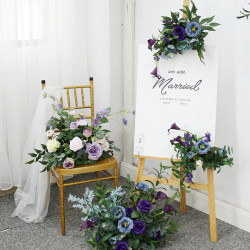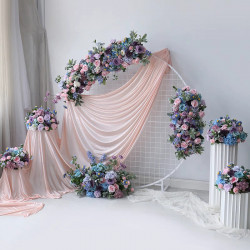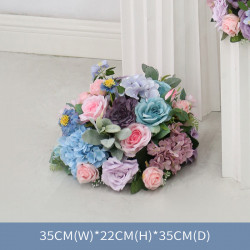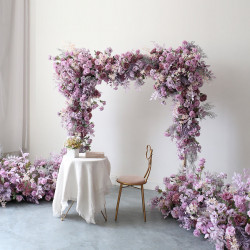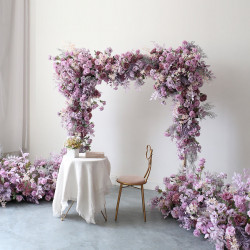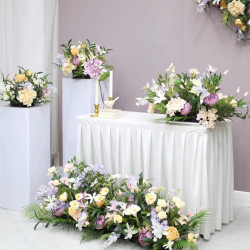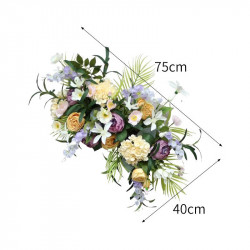Purple wedding theme
Purple Wedding Theme
It makes sense that you would desire a purple-themed wedding if you are a purple fan. Purple comes in various tones, and experimenting with them can change the tone of your ceremony from formal to playful.
Shades of Purple Wedding Themes
Differenttirely may have different tones in mind when they mention purple. This gorgeous hue comes in several forms, such as:
Light Shades
In the spring and summer, pastel and lighter colors of purple look quite attractive. These hues include lavender, wisteria, orchid, and lilac.
Medium to Dark Shades
Medium-toned amethyst, violet, and plum look great all year round. While plum and eggplant (aubergine) are rich purples with gorgeous fall and winter hues, royal purple tends to lean more toward blue.
Pink-Red Purples
There are purple hues that are pink or reddish in tone. There are even those who could refer to them as "pink." Mauve and magenta are included in this group.
What Colors Go With Purple for a Wedding?
Purple pairs well with other wedding colors like royal purple, aubergine, and lilac.
Neutrals
If you want the purple to pop truly, you can always go with neutrals like:
Silver: This contrasts wonderfully with deep and mild purples, seeming fanciful.
White: When combined with any other color, white draws attention.
Cream: Try pairing cream with any shade of purple if you're not into stark white but still want a subtle contrast.
Tan: While tan can be difficult to pull off with purple, a light tan, cuddled to the deepest purple or even a pinkish-purple, might be ideal.
Brown: For a refined style, pair brown with magenta, lilac, or lavender.
Gray: Charcoal looks gorgeous combined with lavender, dark bluish-purple, and silver for an evening wedding.
Some brides choose black and white for their wedding colors. You can stand out by using lavender or lilac instead of white.
Deep accent hues with purple are often best reserved for fall and winter, or at the very least, evening weddings throughout the warmer months. October through February are great for weddings in chocolate brown and black shades. On the other hand, in the spring and summer, combining light or brilliant purples with light hues like white or cream creates a cheerful, new look. But in the low winter light, those same light hues look stunning when combined with rich tones like plum, aubergine, or royal purple.
Other Colors to Pair With Purple
Another option would be to go with something surprising, like a different tint with the same brightness or depth. Compared to the neutral tones, you should use these in lower proportions. Add some colorful flowers to the purple ones. Alternatively, you can tie a ribbon around the stems of the purple flowers for a pop of color. Try this:
Pinks: ballet pink, hot pink
Scarlet, burned orange, sunset orange, peach, and other orange and red colors.
Blues: robin's egg, royal blue, and turquoise
Kelly, pine, and mint greens are examples of greens.
Vibrant color schemes, like purple and yellow, are ideal for summer. For springtime weddings, pastel hues like peach and ballet pink are lovely. Amethyst and royal blue hues work well throughout the cold winter months.
Incorporating Purple Into Your Wedding
You can add as much or as little color as you like. There are many places to include purple, such as the cake, stationary, and centerpieces.
Wedding Party Attire
Most brides will ask their bridesmaids to wear the purple color they choose. The maid of honor may decide to wear something more or less colored.
Brides can choose a colorful wedding gown, a garment with purple accents, or accessorize with amethyst jewelry. Men ought to accessorize with purple boutonnieres and vests. Bouquets, hair accessories, and socks should all complement the purple hue.
Flowers for a Purple Theme
You don't have to limit yourself to just one shade of purple flowers for your wedding. When paired with a purple bridesmaid dress or a white bridal gown, red, orange, yellow, and purple bouquets look amazing.
Remember to experiment a little bit with your flower selection. Purple flowers are not limited to peonies and roses. There are many other options as well. Think about:
- Hydrangeas
- Carnations
- Irises
- Clematis
- Forget-me-nots
- Orchids
- Lisianthus
- Calla lilies
Ceremony Decorations
Use the wedding color of your choice to decorate the ceremony area. Have a purple runner, make a bridal arch with flowers and textiles in your chosen color, and remember to add purple columns and other accent pieces. Whether bows, flowers, or wreaths, chairs, and pew decorations can also feature your preferred hue.
Reception Table Decorations
At weddings, use purple flowers as centerpieces on tables with lighter or darker purple tablecloths for a cohesive look. Consider using a purple runner instead of all purple linens if you'd instead utilize black or white. Use purple satin to cover the chairs or purple ribbon to create a wedding bow.
Reception Lighting
Purple event lighting is a simple, low-cost method to bring purple to a reception. Have your DJ add purple gels to the spotlights and swap out half of the lightbulbs with purple ones. When you drape purple light strands behind tulle backdrops, your ordinary white linens become glittering purple standouts.
Perfectly Purple
Use purple throughout your wedding to make it your theme. Work with your vendors to choose a shade of purple that will stand out at your event. The outcome will be just fantastic.
The Allure of Purple Flowers
For millennia, people have been captivated by the timeless allure of purple flowers. This captivating hue is a favorite for interior design, weddings, and gardening because it symbolizes majesty, elegance, and inventiveness. Purple flowers are appealing because they may stand out while merging in perfectly with other colors. These flowers have the power to turn any area into an enthralling haven, whether it's the delicate colors of lilac or the majestic deep purple of lavender.
But when you combine purple flower arrangements with other colors in your garden or floral arrangements, the real magic happens. Purple flowers can be made more beautiful by the selection of complementary colors, which results in a show that is both harmonious and striking. This is where knowing colour theory and how to use it practically in gardening becomes important.
There are many different purple flower alternatives available, and each has its own distinct appeal. Lavender, pansies, hydrangeas, and irises are some of the most popular purple flowers in gardens. Because each of these blooms contributes a unique shade of purple, your garden can have a wide variety of imaginative color combinations.
The Basics of Color Theory
The study of color theory examines how various hues interact with one another and how they might be blended to produce eye-catching visual effects. You must understand the basics of color theory and familiarize yourself with the color wheel in order to pair colors with purple flowers.
The color wheel is a circular graphic that arranges colors according to how they relate to each other. Red, blue, and yellow are its fundamental colors; green, orange, and purple are its secondary colors; and tertiary colors are the consequence of combining primary and secondary colors. Finding complimentary, analogous, and triadic color schemes is made easier with the help of the color wheel.
It's crucial to comprehend these color patterns while selecting complementary hues for your purple flowers:
- Complementary Colors: On the color wheel, complementary colors are opposite one another. When combined, they produce a dramatic contrast that intensifies the vibrancy of both colors. Complementary hues such as orange, green, and yellow can provide a striking visual impression for purple flowers.
- Analogous Colors: On the color wheel, analogous colors are next to one another. These hues work nicely together and foster a feeling of solidarity. On the color wheel, blue and pink hues that are near purple can mix well with purple flowers.
- Triadic Color Combinations: Selecting three colors that are equally spaced on the color wheel is known as a triadic color scheme. Combinations such as purple, orange, and green can produce a harmonious and eye-catching appearance for purple flowers.
Complementary Colors for Purple Flowers
When combined with complementing colors that produce an eye-catching contrast, purple blossoms can really sparkle.
On the color wheel, complementary colors are those that are precisely opposite one another. When combined, they give each color a more vivid and strong appearance. Some of the greatest complementary colors to think about for purple flowers are orange, green, and yellow.
- Yellow, Its cheery and bright disposition makes it a great partner for purple flowers. Purple flowers and yellow foliage or flowers combine to produce a striking visual contrast that grabs the viewer's attention right away. The effect is both spectacular and captivating. Picture a bouquet of deep purple roses and bright yellow daffodils, or a garden with purple irises surrounded by yellow marigolds.
- Another complementary color that looks great with purple flowers is green. Purple blossoms shine brilliantly against the calming background of the lush, organic green of the leaves and greenery. Think of placing purple tulips in flower gardens with green grass as a border or purple pansies next to green ferns. This combination gives your yard a feeling of harmony and tranquility.
- When combined with purple, orange's warm and lively nature makes for a striking contrast. Orange and purple together can give your garden or floral arrangements a feeling of vitality and excitement. For an eye-catching centerpiece, consider pairing purple orchids with vivid orange lilies or purple petunias with orange marigolds.
Analogous Colours for Purple Flowers
When combining colors with purple flowers, analogous color schemes provide a cohesive and harmonious look. You select colors for this scheme that are next to purple on the color wheel. These hues mix well with purple to give your garden or floral arrangements a sense of calm and movement.
Because of their close closeness on the color wheel, blue and pink hues make ideal companions for purple flowers. Let's examine how your purple blooms might be made more beautiful by using these complementary hues.
A timeless combination that conveys grace and tranquility is blue and purple. The royal richness of purple is complemented by the cold, serene tones of blue, creating a peaceful and attractive contrast.
For a gorgeous display of complementary colors, think about growing blue delphiniums and purple hydrangeas in your garden. This combination is ideal for turning your outside area into a peaceful haven.
When combined with purple flowers, pink's delicate and romantic charm creates a calming and entrancing ambiance. It is the perfect color for weddings and romantic garden settings because the softness of pink balances the depth of purple. Consider a garden with purple irises and pink peonies, or a bouquet with deep purple calla lilies and blush pink roses. The combination of these colors elicits sentiments of tenderness and affection.
Triadic Colour Combinations
Triadic color schemes are a vibrant method to combine purple flowers with other colors to create a visually appealing and well-balanced garden or floral arrangement. You select three colors that are uniformly distributed around the color wheel to create a triadic color scheme. This method can provide eye-catching and colorful effects when used on purple flowers.
Purple, orange, and green make up one of the traditional triads that complement purple flowers quite well.
The anchor of this triad is purple, which is its central color. It gives the color scheme of your landscape depth and richness.
On the color wheel, orange and purple are equally spaced apart, making for a striking and energizing contrast. The royal background of purple blooms contrasts with the vivid vitality of orange flowers or foliage.
Green provides a cool, organic element to finish the triadic harmony. The vibrant interaction between orange and purple is calmingly balanced by the verdant foliage of plants and leaves. You can create a visually appealing and well-rounded landscape by planting orange marigolds and purple tulips and enclosing them with green grass or shrubs.
Monochromatic Elegance with Purple Flowers
Purple flowers can be used in monochromatic designs, which use different tones of the same color to produce a refined and elegant look.
Choosing various purple hues to provide depth and interest to your garden or floral arrangements is the secret to creating monochromatic elegance with purple flowers. Here are some pointers for using purple to create a unified monochromatic garden:
- Choose a Range of Shades: Discover the entire range of purple, from lighter pastels to deeper, darker shades. You may give your design depth by using a variety of hues.
- Vary the Heights: To add visual interest, choose purple blossoms that vary in height. While shorter cultivars offer a complex carpet of blossoms, taller variants can act as focal pieces.
- Consider Bloom Times: Select purple flowers that bloom at different periods over the growing season to keep the purple display consistent. This guarantees that your garden will always be colorful.
- Include Foliage: Include purple-leafed plants and green foliage to break up the monotony and give the monochromatic palette some variety.
- Accessorize with White: If you want to add some contrast, think about using white flowers or adding white garden furniture or accent pieces. When combined with purple, white produces a breathtaking visual effect.
Creating a Mood with Purple Flower Combinations
In any garden or floral arrangement, color has the ability to arouse feelings and create a certain atmosphere. Purple flowers can be used to generate a variety of moods, from romance and drama to tranquility and vitality, when combined with other colors. Let's examine how you might create a mood in your outside area using various color schemes.
Tranquility with Purple and Blue
Purple and blue together create a tranquil ambiance in your yard. These colors' cool tones inspire feelings of relaxation and serenity. Imagine a garden filled with blue hydrangeas and purple lavender, where the calming aromas of the flowers are carried by the soft air. This combo is ideal for turning your outdoor hideaway into a tranquil haven.
Vibrancy with Purple and Red
Purple and red flowers go well together if you want to add vitality and enthusiasm to your yard. A vibrant and vivid show is produced when the regal elegance of purple is paired with the strong and passionate nature of red. Imagine a yard filled with vivid red zinnias and purple petunias; the combination is eye-catching and ebullient.
Romance with Purple and Pink
Purple and pink are the ideal combination for a charming and romantic garden scene. The deep purple is complemented by the delicate and gentle pink hues, which evoke feelings of tenderness and love. This combination is romantic and beautiful, whether it's used in a garden full of purple irises and pink peonies or in a wedding bouquet with purple calla lilies and blush pink roses.
Drama with Purple and Black
Combining purple and black can be a bold decision for garden designers that value drama and sophistication. Intriguing and elegant, the rich purple hues are accentuated by the dark and enigmatic charm of black. For a striking appearance, think about including black components into your purple-flowering landscape, like dark-leafed plants or ornamental pieces.
The color schemes you choose can turn your garden into a haven that elevates your mood and expresses your personal tastes and style. You may create a garden ambiance that appeals to both you and your guests by knowing the feelings that are connected to certain color combinations.
Practical Tips for Choosing and Pairing Colours
Although choosing and coordinating colors for your garden can be a fun and imaginative process, it also calls for careful preparation and attention. Here are some helpful hints for selecting and matching colors with your purple flowers to assist you make well-informed decisions:
- Consider Bloom Times: Consider the times of year that your purple flowers and companion plants bloom. By selecting plants with varying bloom times, you may create a garden that exhibits a constant display of colors all year long.
- Think About Height and Structure: Keep an eye on your plants' heights and structures. While ground coverings and low-growing types add texture and depth, taller plants can act as focal areas.
- Evaluate Textures: Think about the leaf and flower textures. Your garden will look more interesting if you combine different textures. For example, combine the feathery foliage of a companion plant with the velvety petals of purple roses.
- Balance Warm and Cool Colors: Create harmony in your garden by balancing cold and warm hues. Being cool, purple goes nicely with both cool (like blue and green) and warm (like red and orange) hues.
- Experiment with Color Combinations: Don't be scared to try out various color combinations. Your garden is your canvas, and gardening is an art form. Try try different combinations to see what suits your palate.
- Consider the Surrounding Landscape: Consider the current environment and scenery. Your color choices may be influenced by the hues of your home, surrounding gardens, and fences. Ensure that your garden blends in with its surroundings.
- Maintain Balance: Aim for a harmonious color scheme in your yard. Refrain from using too many clashing colors in your room. The most gratifying outcomes are frequently achieved through balance and simplicity.
- Think About Foliage Color: Keep in mind that the color scheme of your garden can be greatly influenced by the color of the foliage in addition to the flowers. Even when they're not in bloom, plants with vibrant leaves can still be visually appealing.
- Be Mindful of Cultural Associations: Certain colors could have symbolic or cultural meanings. When selecting colors for particular locations or occasions, keep these connotations in mind.
FAQs
Q: What are the best complementary colours for purple flowers?
On the color wheel, complementary colors are those that are situated right across from one another. The finest complementing colors for purple flowers are orange, green, and yellow. When combined with purple blossoms, these hues produce dramatic contrasts that bring out the vibrant qualities of each color. When paired with purple flowers, yellow in particular is a timeless option that gives your garden vitality and vigor.
Q: Can I use white with purple flowers in my garden?
Yes, it is a timeless and classic decision to combine purple and white flowers in your yard. White is a sophisticated and neutral partner for purple that gives the rich purples a sense of harmony and purity while letting them shine. This combination can produce a garden that exudes beauty and tranquility while having a neat and elegant appearance.
Q: How do I create a balanced triadic colour scheme with purple flowers?
Selecting two other colors that are equally distributed around the color wheel in addition to purple will help you create a harmonious triadic color scheme with purple flowers. An example of a traditional triadic mixture might be orange, green, and purple. The secret is to employ these three hues in a way that keeps your landscape feeling harmonious and balanced. To get the desired visual impact, you might try varying the dimensions and configurations.
Q: What are some mood-enhancing colour combinations using purple flowers?
Purple flowers combined with other colors can create a range of emotions in your garden. Combine lavender or light blue tones with purple to create a peaceful and serene ambiance. Use purple with orange or yellow to create a lively and energizing atmosphere. Combine purple with delicate pinks and whites to create a romantic and dreamy atmosphere. Your outdoor space's mood can be greatly impacted by the color scheme you choose.
Q: What should I consider when choosing companion plants for purple flowers?
There are a number of things to take into account when choosing companion plants for your purple flowers. These consist of textures, heights, and bloom periods. To keep things visually appealing throughout the seasons, make sure the companion plants bloom at different times. Plants of different heights will give your landscape depth and dimension. Finally, take note of the leaf and petal textures; different textures can give your garden compositions more visual depth.
